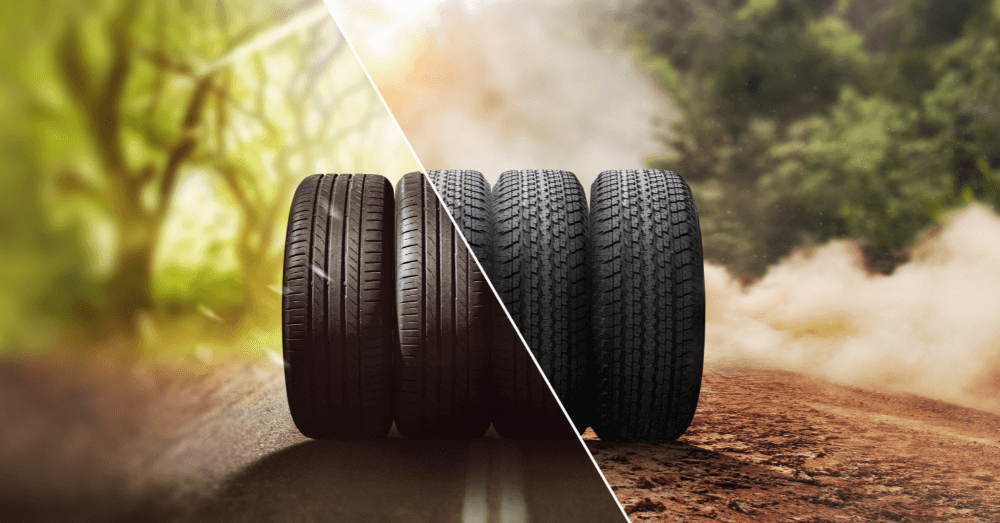Average all-season tires lasts between three and five years, but tire lifespan depends heavily on your driving habits, maintenance, and various other factors.
To keep your tires in good condition for as long as possible, it’s important to regularly rotate your tires, keep them properly inflated, and avoid aggressive driving. You might consider a regular tire service as well.
Tire Maintenance Tips
To extend the life of your tires, simple maintenance can go a long way. Start by checking your tire pressure every 3,000 miles or every three months depending on how much you drive. Tires naturally lose air to the tune of about 2-3 psi per month. It’s important to check your air pressure when the tires are cool and if you need to add air, follow the recommendations printed on the door jamb sticker or in the owner’s manual.
It’s also important to rotate your tires every 6,000 to 8,000 miles to help the tread wear evenly. If you’ve just installed new tires, it’s important to get them rotated after you’ve driven 3,000 to 5,000 miles on them.
If you feel any wheel pulling, you might consider a wheel alignment check to ensure that your wheels are in proper alignment. Regularly check your tires for any sign of damage or odd tread wear. Remember that the outside temperature affects tire inflation. It will be higher in warm weather and lower in cold weather.
Avoid aggressive driving to preserve tire life. Examples of aggressive driving that negatively impacts your tires include hard cornering, slamming on your brakes, accelerating quickly from a stop, and swerving between lanes.
How To Avoid Tire Damage
Keeping your tires in good condition for as long as possible also means avoiding tire damage. How does tire damage happen? Aside from unexpected road obstructions, the most common reason for tire damage is underinflating or overloading the tire. This causes the tire to become excessively hot and flex the sidewall more than it should. The higher operating temperature and unnatural sidewall flexing can result in internal damage.
To avoid this scenario, check your tire inflation regularly and maintain the correct air pressure. Avoid overloading your tires by not carrying too much weight in the rear or front of your vehicle.
If you get stuck in snow, mud, or sand, don’t spin your tires excessively. The amount of force generated by a free-spinning tire/wheel can cause the tire to suddenly explode. If you get stuck, use a backward and forward rocking motion to free your vehicle.
When To Get Tire Service
You should get tire service if you find that your tread depth is too low or if you discover other signs of wear or damage. If you notice any vibration, thumping, or pulling to one side, you should take your vehicle in for a tire service. Sometimes it’s impossible to avoid getting something in your tire, like a nail or a screw. If that happens, you may notice your air pressure going down faster in one tire compared to the others.
The good news is, in many cases, these objects can be removed and the hole plugged to make your tire like new again. As long as the object doesn’t create too big of a hole or damage your sidewall. It’s also important to remember that if you end up with a flat tire, pull over as quickly as you can. Driving on the flat can irreversibly damage the tire.
